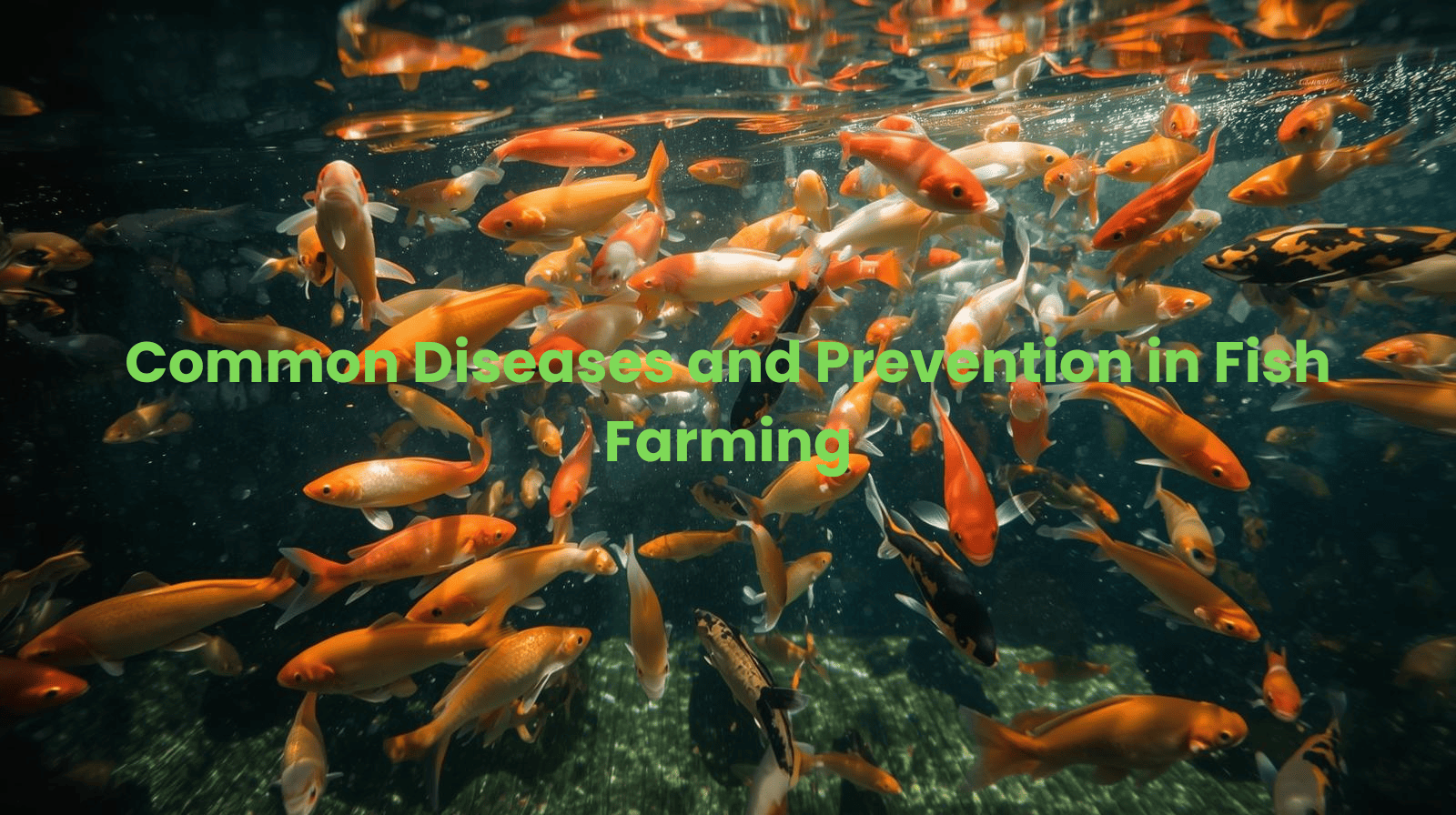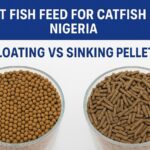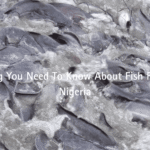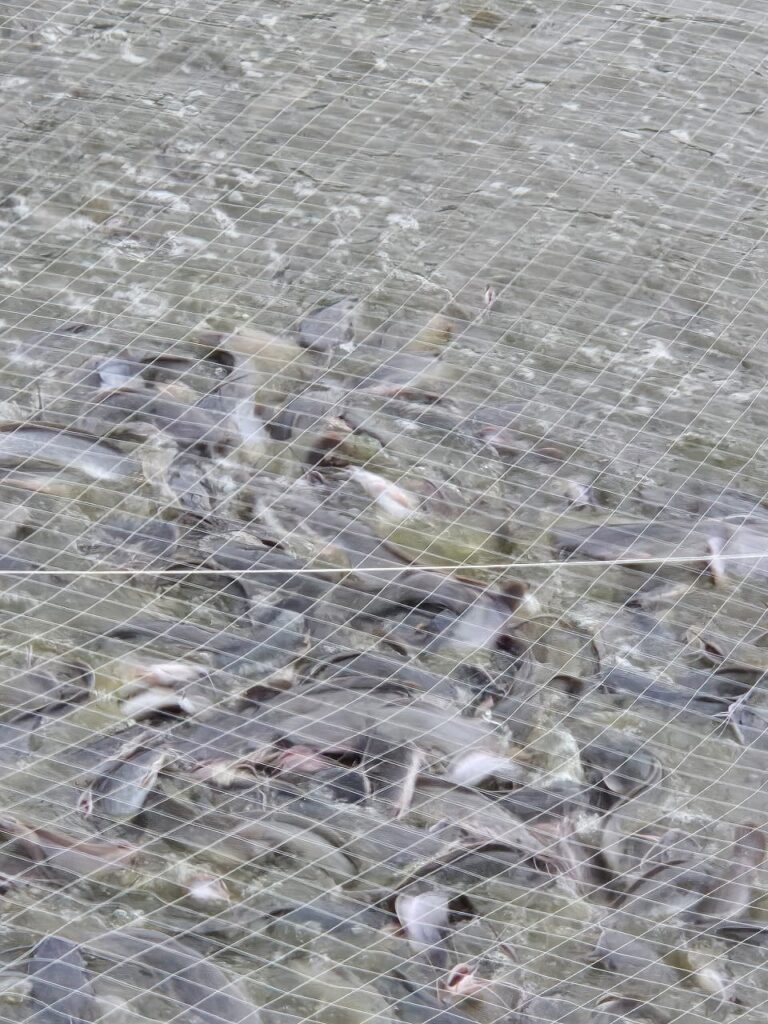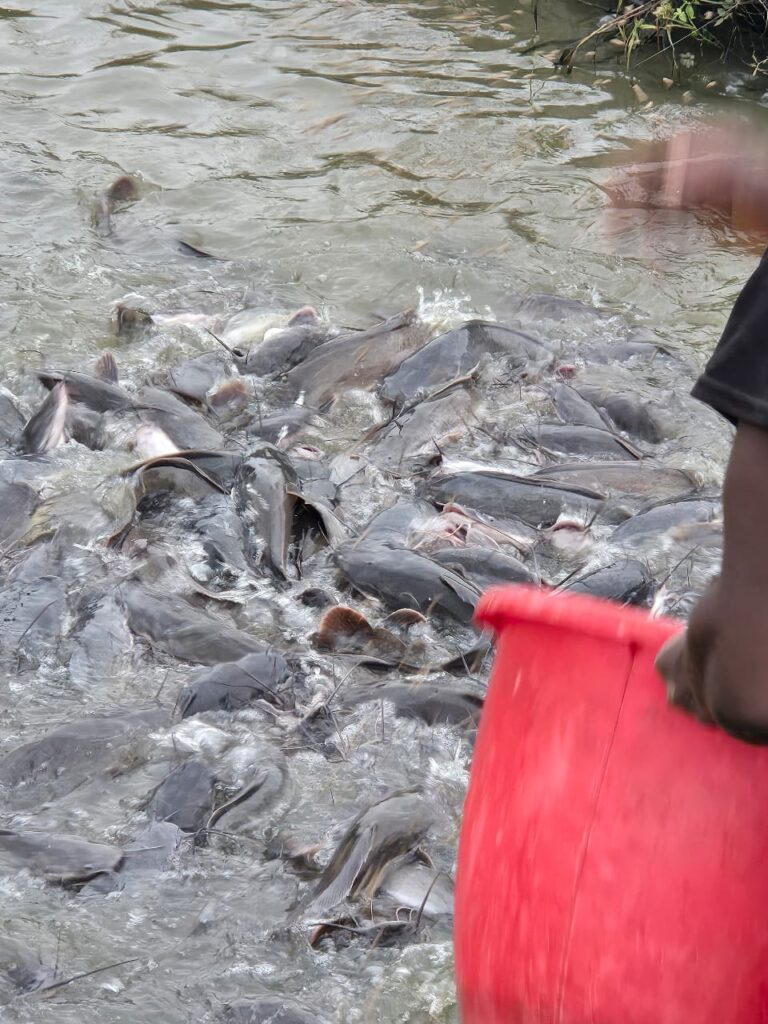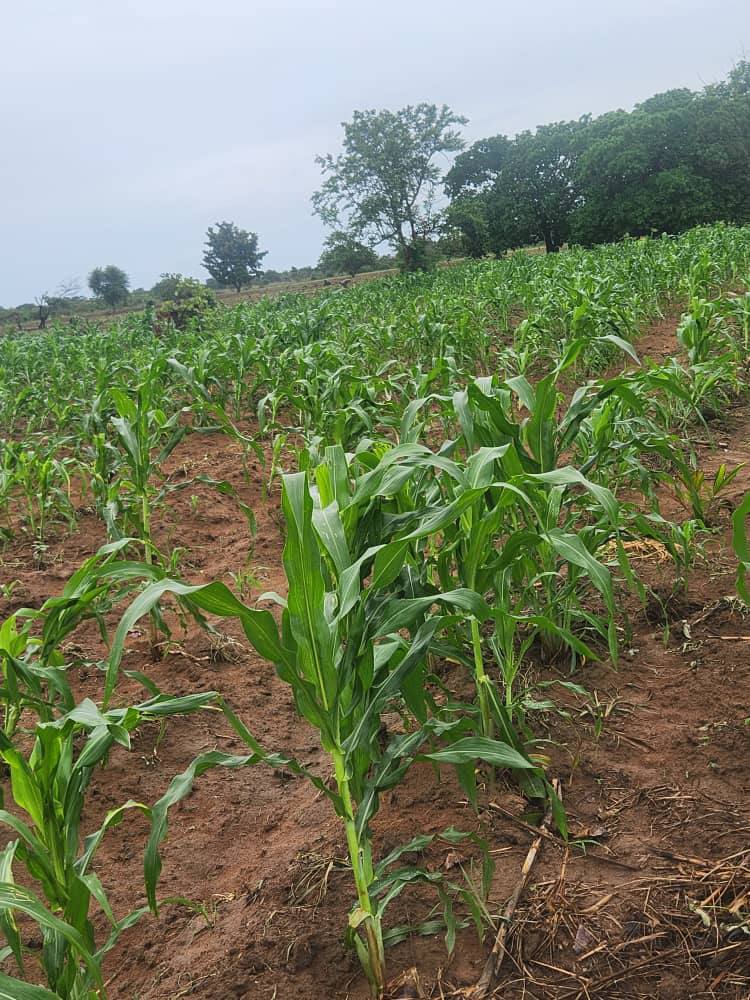Fish farming is one of the fastest-growing livestock farming in Nigeria. There's an increasing demand for fish due to its high nutritional value and its affordable source of protein. However, fish diseases pose a great threat to the fish farming business because they lead to high economic losses, causing high losses to the farmers. Fish …
Fish farming is one of the fastest-growing livestock farming in Nigeria. There’s an increasing demand for fish due to its high nutritional value and its affordable source of protein.
However, fish diseases pose a great threat to the fish farming business because they lead to high economic losses, causing high losses to the farmers. Fish diseases, if not well taken care of or prevented, can wipe out an entire stock in just a couple of days.
Therefore, as a fish farmer, it’s pertinent to protect and prevent frequent disease attacks to maximise profit in the fish farming business.
This article aims to explore the common diseases that affect fish with a detailed explanation of how to prevent common diseases in fish farm businesses.
Common Fish Diseases
Fish, like any other livestock, are prone to diseases caused by bacteria, fungi, viruses, parasites, etc. Below is a list of common fish diseases.
1. Bacterial Infections
These are among the most common fish diseases. Diseases caused by bacteria can have significant effects on all stages of fish rearing, from the egg-laying stage to maturity. They arise due to poor water quality, fish being stressed, or high stocking densities. Bacterial infections affect fish both internally and externally, presenting a wide range of symptoms.
Common signs of bacterial diseases in fish include Rapid breathing, Redness around the area of the lateral lines, Disintegration of fins, Loss of appetite Abdominal swelling.
| Name of Disease | Cause | Symptoms | Treatment |
| Aeromonas | Aeromonas hydrophila | Reddening of the body, hemorrhagic spots in the gills, tail, fins, wall, and skin, and gill ulcers | Antibiotics improve the water quality. |
| Columnaris | Flavobacterium columnare | White or greyish spots on the head, fins, or gills | Salt bath, antibiotics |
| Dropsy | Internal infection | Swollen body, inability to close mouth, protruding eyeballs | Antibiotics, salt bath |
2. Parasitic Infections
These are common fish diseases caused by parasites. Diseases caused by parasites spread quickly in poor water conditions and overcrowded systems. They can have a great impact on the fish, both externally and internally, and their. If not properly treated, parasitic infections can lead to stunted growth and high mortality rates.
Symptoms
- Loss of appetite
- Rapid breathing
- Scratching
- Inactivity
- Excess mucus
| Name of Disease | Cause | Symptoms | Treatment |
| Costiasis | Ichthyobodo necator | Flashing behaviour, difficulty in breathing, cloudy eyes | Formalin bath, salt bath |
| Flukes | Monogenean trematodes | Red spots, excess mucus, decreased appetite | Praziquantel treatment |
| White Spot Disease | Ichthyophthirius multifiliis | White cysts on skin and fins, difficulty in breathing | Increase water temperature and salt treatment |
3. Fungal Infections
Fungal infections are among the most common diseases that affect fish. Fungal infections in fish often occur due to stress. Poor water quality can also lead to an increase in fungal infections. Fish fungus is a contagious disease that can easily spread in dirty tanks. Most fungal infections only attack the external tissues, and only a few fungal infections affect the internal organs of fish.
Symptoms
- External sores and cysts
- Sluggishness
- Hollow bellies
- Difficulty in swimming
- Fin and tail rot
| Name of Disease | Cause | Symptoms | Treatment |
| Branchiomycosis (gill rot) | Branchiomyces spp. | Redness of gills, which later becomes grayish-white; fish gather in groups at the water inlet and die | Treat water with quicklime, improve water flow |
| Saprolegniasis | Saprolegnia spp. | Cotton-like growths on the skin and gills, depigmented skin, and sunken eyes | Salt dips |
4. Viral Infections
These are infections caused by microorganisms known as viruses. They are tiny organisms that invade the fish’s cells and begin to replicate. Viruses impair the rapid growth of fish and, if unchecked, could lead to the death of many fish
Symptoms
- Difficulty in eating
- Swollen lymph nodes
- Rapid weight loss
- Swollen tonsils
- Gastrointestinal disturbances
| Name of Disease | Cause | Symptoms | Treatment |
| Infectious Pancreatic Necrosis (IPN) | Birnavirus | Dark colour, bloating | No direct cure, vaccination |
| Viral Hemorrhagic Septicemia (VHS) | Rhabdovirus | Bulging eyes, bleeding under the skin | Disinfection and culling |
| Koi Herpesvirus (KHV) | Herpesvirus | Pale patches on the skin, sunken eyes, bleeding gills | Quarantine, increase temperature |
5. Nutritional Diseases
Poor diet due to a lack of essential feed composition, like vitamins, minerals, and amino acids, weakens the immune system of fish, making them vulnerable to disease attacks.
Symptoms
- Poor growth of fish is associated with a deficiency of vitamin A
- Muscular deformities are associated with Vitamin E deficiency
- Pantothenic acid deficiency is associated with clubbed gills.
- Muscle abnormalities are associated with selenium deficiency
| Name of Disease | Cause | Symptoms | Treatment |
| Fatty liver disease | Overfeeding or an unbalanced diet | Reduced growth, loss of appetite, swollen feet and legs | Reduce fat intake |
| Vitamin C deficiency | Poor feed formulation | Skeletal deformities, external and internal haemorrhaging | High-quality feeds with the right quantity of vitamin C |
| Anemia | Iron or vitamin B deficiency | Pale gills, sluggishness | Feeds with the right amount of vitamins and minerals |
Prevention Tips For Common Diseases
As a fish farmer who wants to maximise profit and minimise loss, preventing common diseases is far better than treating them. It is more cost-effective, saves your entire stock from sudden death, and requires fewer resources. Below are key prevention tips to curtail the spread of diseases
Quarantine new fish
One of the quickest ways through which diseases spread in fish farming is introducing new fish to the tank main without proper isolation.
It’s essential to quarantine new fish for at least two weeks before adding them to your main tank. Ensure that the quarantine period is not less than two weeks, as this is typically how long it takes diseases and parasites to show.
During this time, you can effectively observe the new fish for any signs of illness and ensure that they’re free of parasites or other contagious diseases.
If, after the quarantine period, your fish don’t show any signs of parasites or bacterial infections, it’s safe to add them to the main tank.
Maintain water quality
Poor quality of water can weaken the fish’s immune system and make them susceptible to diseases. To maintain good water quality, it’s important to regularly change water and test the water quality at least once or twice a week.
Below is a list of parameters that can influence water quality:
-
pH levels
pH is the level of the hydrogen ions present in the water. pH values range from 0 to 14. Pond water is acidic when pH is less than 7.0, neutral when pH is equal to 7.0, and alkaline when pH is greater than 7.0. In general, fish exhibit better production performance and health at water pH values ranging from 7.5 to 8.5, as these values match the pH of their blood.
Equipment to test water pH levels
- Digital pH meters
- pH test strips
- Liquid colour comparator kits
- Temperature
Water temperature is an essential parameter that has a significant effect on fish growth and survival. The acceptable water temperature for optimal growth of fish in fish ponds is within the range of 20-24°C. Low temperatures lead to slow metabolism, decreased appetite, and reduced growth rate.
Similarly, high temperatures increase fish metabolic rates but decrease the water-holding capacity of dissolved oxygen, making it harder to breathe.
A thermometer can be used to effectively monitor water temperatures.
- Dissolved oxygen
Dissolved oxygen is the amount of oxygen present in water. The relevance of monitoring the level of dissolved oxygen in ponds is very important because fish breathe in oxygen through their gills for general body metabolism.
It is one of the most critical indicators of a pond’s health, as it directly affects the survival of fish
- Ammonia levels
Ammonia is the major nitrogenous waste product excreted by fish. At low concentrations, ammonia damages gills and causes stress in fish. Low levels of ammonia make fish susceptible to bacterial infections and poor growth. At higher concentrations, ammonia will kill fish.
Avoid overfeeding
Overfeeding is one of the common mistakes that many beginners make in fish farming. Leftover feeds pose a great threat to the health of fish and could lead to their death of fish. Therefore, it is pertinent to know the right feed requirements for your fish.
Use high-quality feeds
Nutrition plays a vital role in the immunity of fish. High-quality feeds have a direct impact on the health status and growth rate of your fish. A poor diet, on the other hand, can cause a retarded growth rate of fish and make them susceptible to diseases.
Frequently Asked Questions (FAQs)
Q: What is the most common cause of death for fish
A: The most common cause of fish death is poor water quality. This includes high ammonia or nitrite levels, low dissolved oxygen, and sudden temperature changes. These changes in the aforementioned parameters make fish susceptible to diseases, thereby causing death.
Q: Do I need a quarantine tank for new fish?
A: Yes. Quarantine new fish for at least two weeks before adding them to your main tank. This enables you to fully monitor the health status of the fish before adding to the existing ones.
Q: How do I know if my fish is ill or just under stress?
A: To know when your fish is ill, look for external signs of illness, such as Pale gills, sluggishness, and red spots. As for stress, it is usually characterised by hiding and refraining from eating.
Q: What are the best prevention measures against common diseases?
A: Take your fish pond maintenance very seriously, including partial water changes every two weeks. Also, ensure your temperature is stable, and regularly perform a water test.
Q: How do I know if my fish is ill or just under stress?
A: Look for external signs of illness, such as spots, bloating, and abnormal swimming behaviour/movement. Stress is usually associated with hiding, refraining from eating.
Conclusion
Fish farmers need to maintain good water quality, provide high-quality feeds, quarantine new fish, and practice good hygiene to prevent common fish diseases.
In addition, ensure effective and prompt treatment of diseases to minimise the death of fish and the eventual loss to fish farmers.
Are you a fish farmer in Nigeria? Share your experience with us on some of the diseases that affected your fish and how you prevent them in the comments below! Also, contact us for your Quality Fish feed, fish, and other agricultural produce.
You can also purchase your local fish feed, book a fish feed consultation, and farm management support, and you can also check out our exclusive farming tips and videos on our YouTube channel.

